Ephesus in Turkey
Pictures and information about Ephesus in Turkey
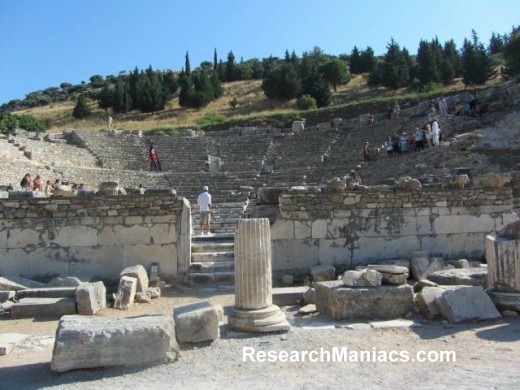
Above picture: Ruins of the Roman Senate (Odeon, or small theater) in Ephesus. The city, on the west coast of Asia Minor, was originally Greek, but later became part of the Roman Empire. In Roman times it had a population estimated between 250 and 500 thousand, making it one of the largest cities in the Mediterranean world. Ephesus was partially destroyed by an earthquake in A.D. 614. The city's harbor thereafter slowly silted up causing its commercial importance to decline.
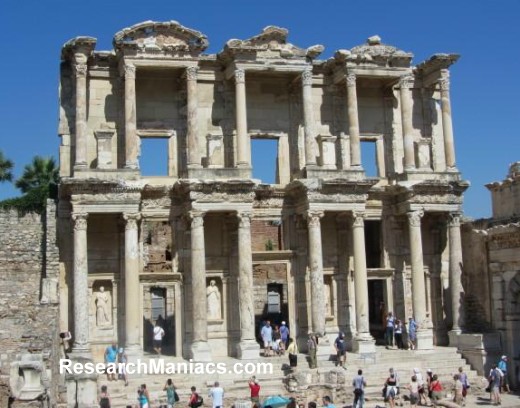
Above picture: The Library of Celsus in Ephesus was built between A.D. 100 and 110 by Gaius Julius Aquila in memory of his father, Tiberius Julius Celsus Polemaneanus, a former governor of Roman Asia, who is buried under the library. The library held 1,200 scrolls and was built facing east to make the best use of morning light; it was destroyed by an earthquake in A.D. 270. The facade was reconstructed between 1970 to 1978.
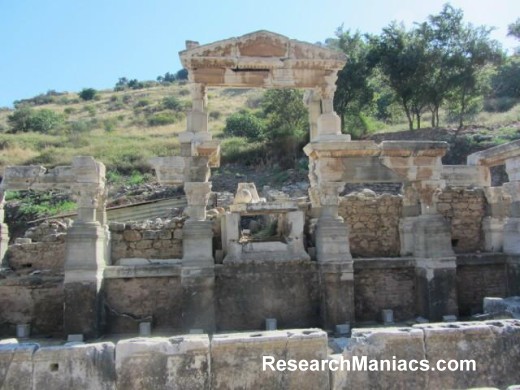
Above picture: Ruins of the public bath in Ephesus. The city had several bath complexes erected by the Romans in different part of the city. Its aqueduct system was one of the most complex in the ancient world with multiple aqueducts of different sizes supporting various functions.
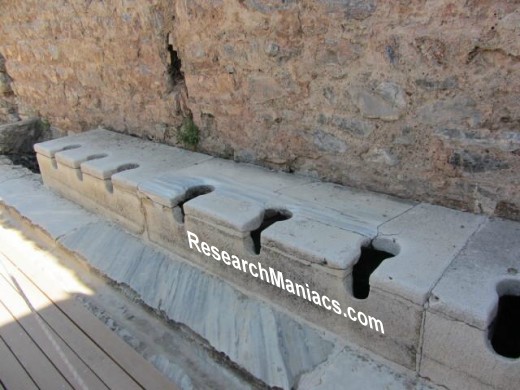
Above picture: The public toilets in Ephesus were located in the public baths and had running water. Servants were often employed as seat warmers before the patrons used the cold stone seats. An inscription on a wall reads: "Close your eyes, count slowly to 10, and it will come."
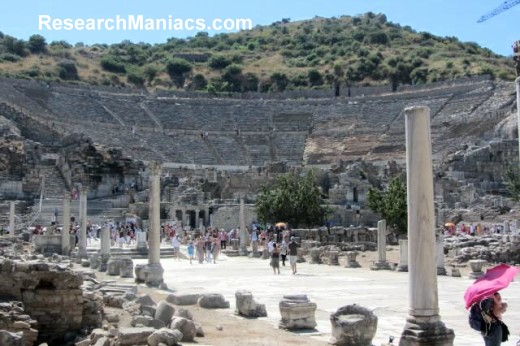
Above picture: The Great Theater in Ephesus was based on an original Greek structure. In the Roman period, it was expanded under the reigns of Domitian (A.D. 81 to 96) and Trajan (98 to 117). One estimate gives the theater's capacity as 44,000 spectators and as such it would have been the largest in the ancient world. While generally used for theatrical performances and public assemblies, it was also used for gladiatorial contests in the later imperial period.
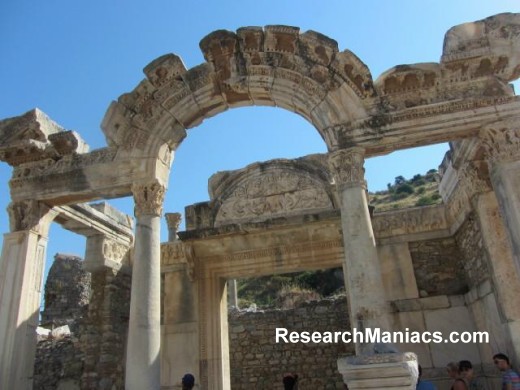
Above picture: Ruins of the Temple of Hadrian in Ephesus. The temple dates to the 2nd century A.D.; it underwent repairs in the 4th century. The structure has been partially reconstructed from surviving architectural fragments.
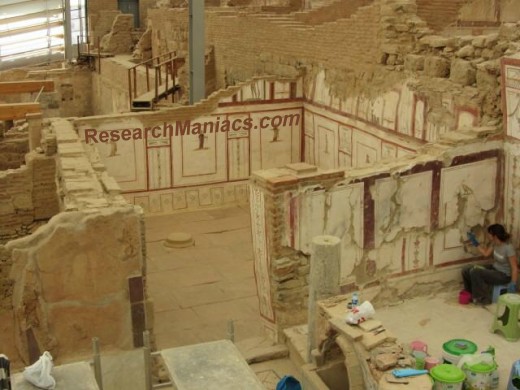
Above picture: Terrace homes in Ephesus built on a hill opposite the Temple of Hadrian. The wealthy families lived here in six multi-family homes built on three terraces. Most homes were highly decorated and were heated by use of hot water flowing through pipes in the floors and walls. The roof of one house formed the patio or terrace of the house above it. Work on restoring the houses began in 1960.
World Pictures
See more pictures from around the world.
| |
Turkey
Learn about the country of Turkey. Information and facts about Turkey.
|
|
|
|
|